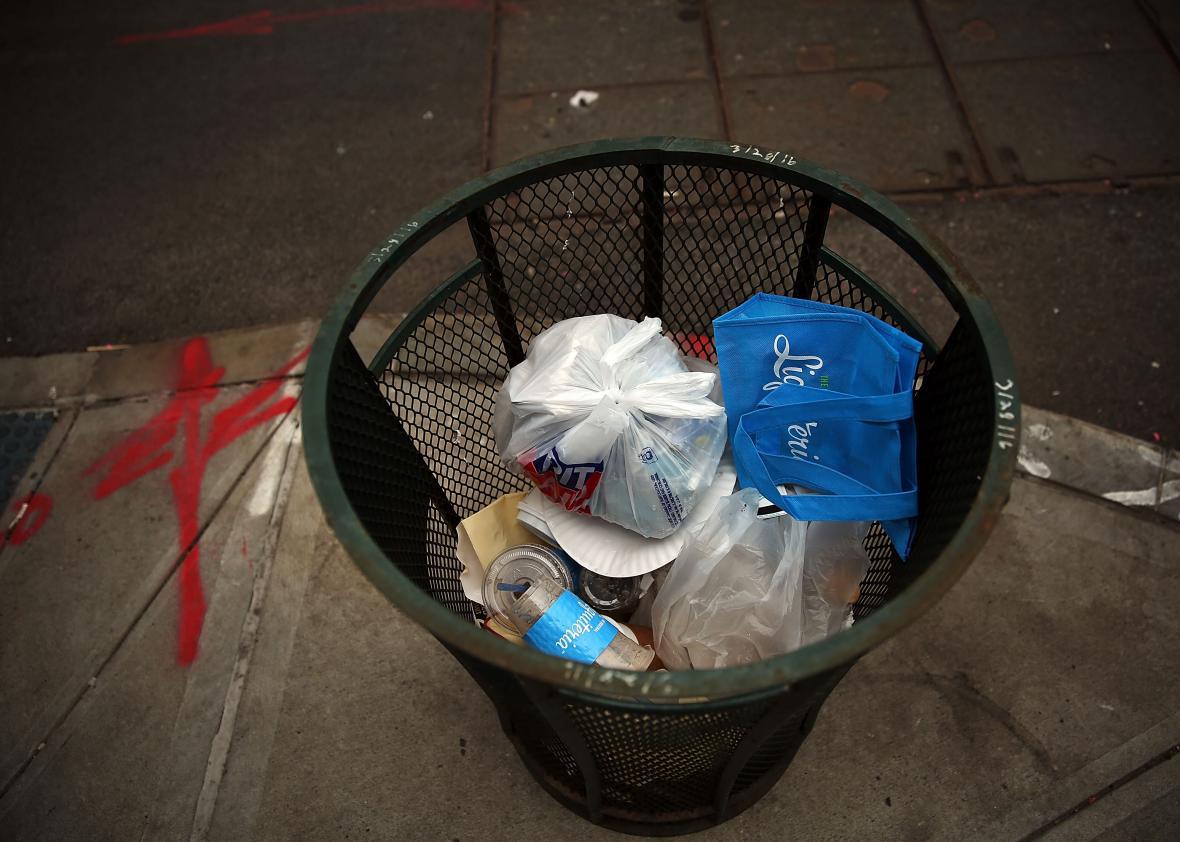The word content is creeping into journalism, which scares the hell out of me.
You see it in the job listings. Politico is hiring a reporter who will “deliver the kind of content our subscribers have come to expect.” Time Inc. is recruiting not only for a “digital content enthusiast” to serve as an associate editor at Fortune but also for a breaking news reporter at Time.com who will produce “video, mobile and social content”—both of which, as if to hammer the phenomenon home, are listed on the company’s careers page under a category simply called “content,” which when I last checked listed a whopping 75 positions.
It’s a trend that should make anyone who cares about journalism uneasy. “Content” is a vague, cynical word—a lazy catchall for the full spectrum of stuff ClickHole satirizes, from simpering listicles to hot takes to quizzes that, per the Awl, “are almost comically transparent in their desire to turn you into a marketable commodity.”
The common denominator, as far as I can tell, is that content is created by the lowest bidder, in the highest volume and to the lowest standard that’ll still attract eyeballs on Facebook. That doesn’t mean it’s all terrible, I suppose—the success of BuzzFeed and Upworthy is a testament to its apparent appeal—but, for the most part, units of content are fundamentally interchangeable, like off-brand Oreos. In a glum 2009 feature, a Wired writer asked a videographer who had shot an astonishing 40,000 videos for the pioneering content mill Demand Media whether any particular project he’d done for the company stood out as a favorite. The videographer demurred; “I can’t really remember most of them,” he said.
That’s not, I’d like to think, a healthy way of looking at journalism. Doing so is certain to bring some of content’s low-rent sensibilities into the newsroom, and particularly the odious idea that page views are more important than basic, decent things like tracking down sources and fact checking and using common sense.
U.S. News & World Report, to pick a particularly transparent example of that drive for web traffic, is currently hiring a features editor who will, in the words of the job listing, collaborate “with product and SEO [search engine optimization] teams on content ideas.” It’s worth letting that wash over you again; the person who takes that job will be choosing things to write about with the goal of maximizing traffic from Google search results.
In journalism-as-content, the typical way to throw together a story is to avoid original research entirely, either by whipping up a sassy spin on another publication’s work or by weaving atomic units of social media like tweets and Tumblr screencaps into a passable narrative. The Guardian recently ran a dispiriting story about how those thinly sourced social media articles often turn out to be false or woefully distorted; journalists quoted in the piece pinned the blame on their management’s bottomless hunger for viral hits. “There is definitely a pressure to churn out stories, including dubious ones, in order to get clicks, because they equal money,” said one of them, who the Guardian didn’t identify by name.
And even if a story isn’t exactly false, journalism-as-content can give rise to coverage so hasty and divorced from context that it loses any particular meaning. Last year, for some reason, I set up a news alert for Kevin Bollaert, a sleazebag who went to prison for running a revenge porn site in California. Last month, I was surprised to see a new story about Bollaert pop up, this time on the blog ATTN—its about page declares that “content is chief”—except that when I opened it, it seemed to be the same year-old news that Bollaert had been sentenced by a San Diego judge, repackaged under a salacious new headline. On closer inspection, it turned out that the author had mistaken a 2015 story about the sentencing for a current one. (To ATTN’s credit, someone eventually updated the post with a sheepish explanation that the sentencing had been “incorrectly reported as breaking news.”)
Still, it’s tough to imagine the slurry of sloppy research and pressure to publish that could lead to presenting a year-old story as the news of the day. Talking to a single source, or even checking Twitter, would have easily avoided the whole mess, and the fact that they apparently didn’t raises the uncomfortable question: If the story hadn’t been a year off schedule, what would ATTN’s know-nothing hot take have added to our understanding of it? What’s the reason, other than fishing for traffic, that it needed to be published at all?
There’s not an easy solution here. Journalism is in the throes of a terrible revenue crisis. That’s spurred some outlets to try all sorts of cool experiments, but it’s led many others to lay off droves of seasoned staff, cut expensive coverage, and fall back on the cheap fluff of content.
I should acknowledge, by the way, that I’m part of the problem. I’ve published plenty of thinly sourced drek, which I tell myself is because it helps pay my bills and lets me work on stuff that isn’t drek. In my defense (I hope) it makes me feel like trash every time.
Still, the words we use matter. I find the idea of someone aspiring to create content, in as many words, to be almost indescribably sad. It seems like an act of pre-emptive surrender, of giving up hope that you’ll ever create something with a higher calling than attracting clicks for some monolithic publisher.
So here’s my plea to everybody that creates things to share on the internet, and especially journalists: take enough pride in what you do to be specific. If you report, call yourself a reporter. If you argue, call yourself an essayist. If you collate GIFs—well, make up a cool job description for yourself.
Call it something. Just don’t call it content.
